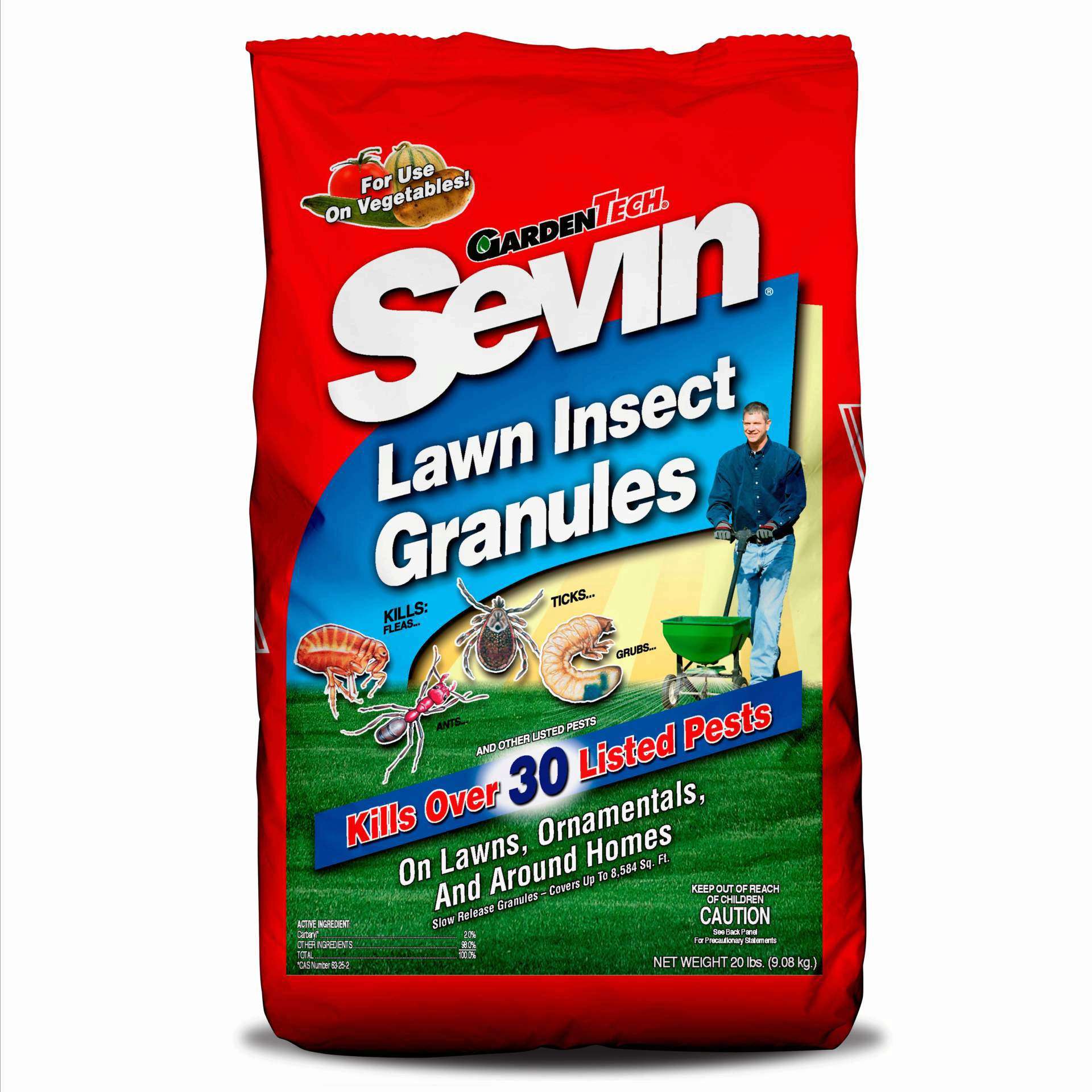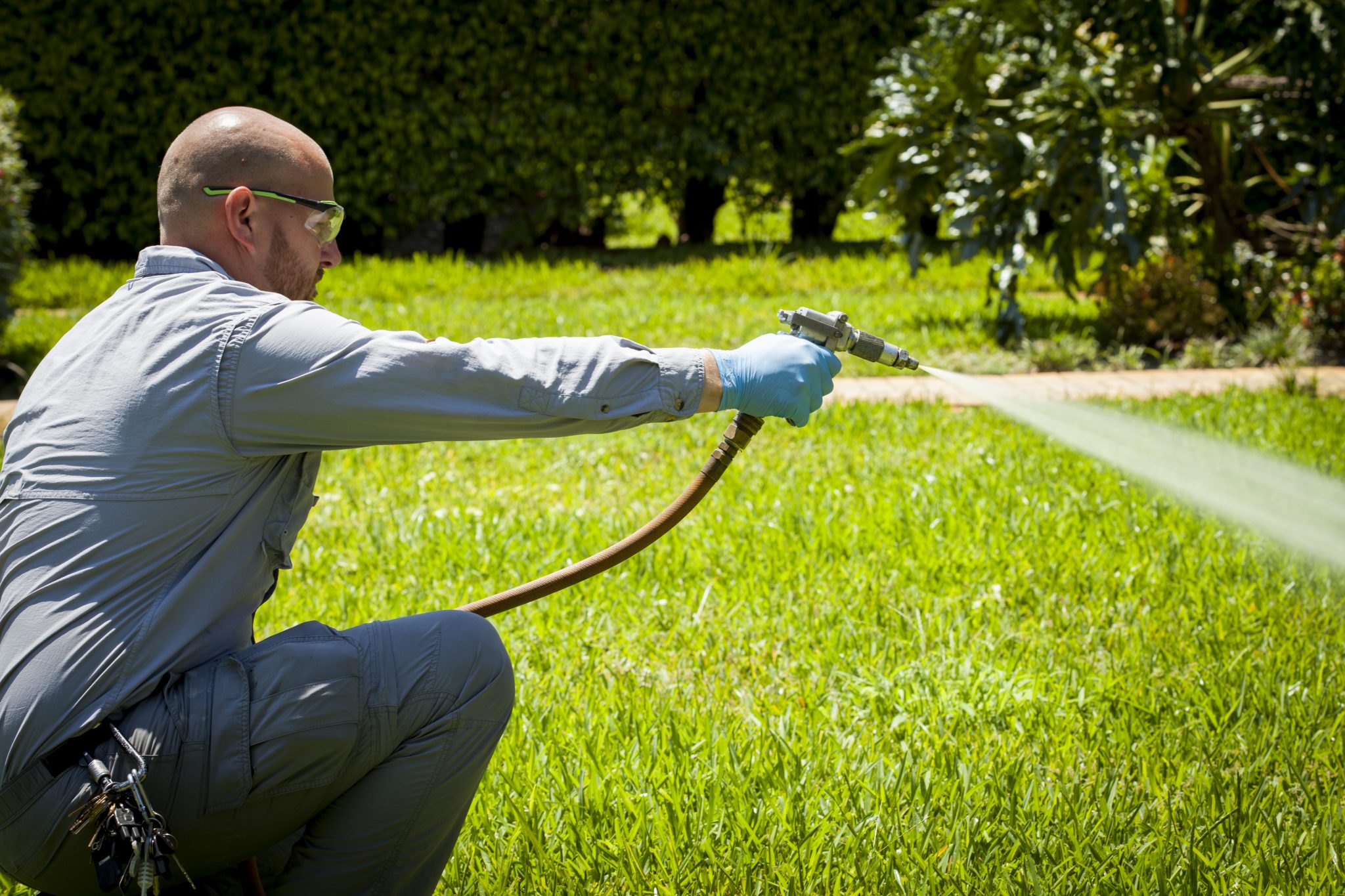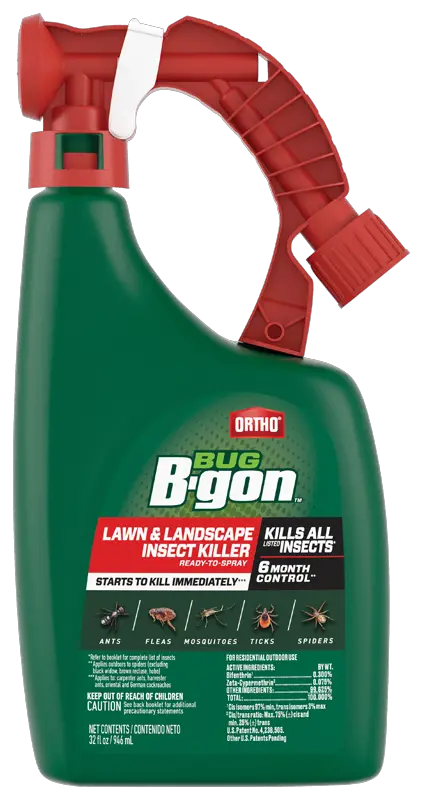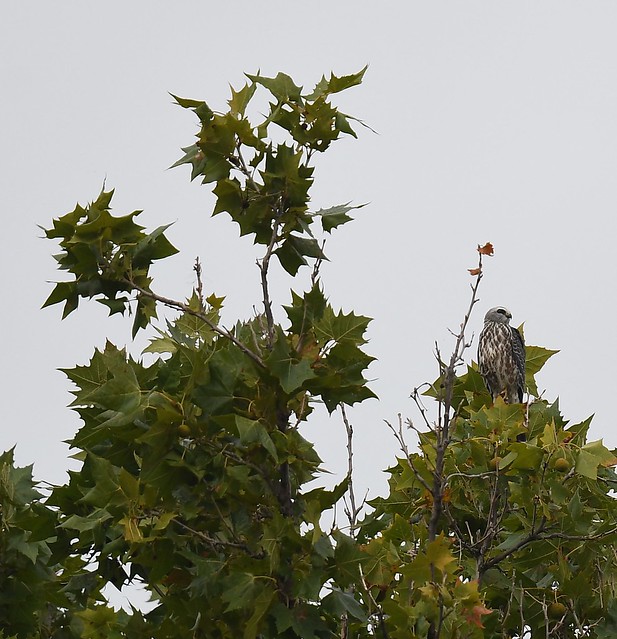How To Get Rid Of Bugs After Mowing
To get rid of bugs after mowing:
How To Tell If Your Lawn Has A Fungal Disease
Your lawn is an ecosystem comprised of a vast multitude of organisms, including fungi. When everything is in balance, fungus will not grow. However, several factors may disrupt this equilibrium, causing fungi to overrun your lawn and consequently become a problem.
Various factors have been found to encourage fungal overgrowth on lawns. These include:
- Improper mowing, particularly very low mowing
- Overwatering
- Planting grass strains that are susceptible to fungal diseases
- Elevated temperature and humidity
The most obvious sign of lawn disease is a dead or dying segment on your lawn. However, not all dead and dying spots are attributable to fungus, so you should consider other possible causes as well.
Classical signs of fungus in a lawn include:
- Brown, white or yellow rings or patches that seem to grow in diameter over time
- Parts of the lawn that may appear darkened, slimy, wet or gray
- Black, purple, grey, orange or red spots on the blades and/or stems of the lawn grass
- Grass blades which may appear frayed, discolored and/or distorted
Lawn disease thrives when:
- The grass species on the lawn are susceptible to the disease-causing fungus
- The environmental conditions favor fungal growth and proliferation
- The homeowner fails to take the appropriate countermeasures against the lawn fungus in good time
Huge Variety And Selection
The online platforms around the world are growing exponentially in size, and that applies to the selection of products as well. As they get more popular, more and more brands sign up to sell their products on online platforms.
They have a wide range of products across many categories, divided and organized well. This helps you find exactly what you are looking for easily. You may even get software-generated recommendations for products you may need. This includes bug spray for lawns and many more.
Having a huge variety means that you can assess your preferences and choices. You can choose from a range of alternatives before purchasing. This is often not the case in most physical stores, where there is a limitation to the number of brands.
Recommended Reading: How Much Should I Pay For Lawn Service
What To Do After Putting Down Grub Control Pesticide
You want to get the best effects after applying the pesticide on your lawn. Here are a few tips on what to do after the application:
- Water your lawn immediately after putting down grub control: Most grub killers and preventers come as granular formulations. For them to be effective, water your lawn to at least 1-inch.
- Monitor your lawn for grub worm activity after treating it. After applying a grub killer, you expect eradication to happen within a few days to a week. If the damage continues, it is likely the grub treatment was not enough or did not work.
Pro tip: Some grub control pesticides such as Scotts GrubX provide long-term control and can be applied almost any time of the season. It can kill adult beetles and reduce their population in your yard.
- One application in the spring or early summer kills and prevents grubs and armyworms for 4 months
- Helps prevent root damage caused by insects for a stronger lawn
- Prevents turf damage by killing grubs when they are young
Products Needed For Step 1c

Apply Your Insecticide
Apply your insecticide across your entire lawn. If using a liquid insecticide, broadcast spray all of your lawn turf, starting from the edges of your lawn and working your way in.
If using a granular insecticide, walk the entirety of your turf with your spreader. Be sure to double back to your starting point to make sure you treat all grass.
You may need to water your granular insecticide after application. Read the label of your insecticide to determine if water is needed.
Watch the video below for more information on using insecticide on chinch bugs.
Recommended Reading: How Much Does It Cost To Redo Lawn
Factors To Be Aware Of
When choosing the right treatment options, you need to know what pests you are dealing with. For example, one pest may need weekly treatment while another might be handled with monthly treatments. Youll also want to think about the size of the infestation and the treatment plan.
All of these things combine to determine how often you need treatment. Location, weather conditions, and types of pests can also factor into things. However, for most people, you can use the information below to create a pest treatment schedule that keeps your lawn looking great in all seasons.
How To Apply Granular Pesticides
- Granular spreading of pesticides are best performed on residential and commercial lawns and yards. You will need to first calculate the square footage of the area to be treated to determine how much granules need to be loaded in a spreader.
- We recommend using Bifen LP Granules as it carries a broad label of insects that it can treat and has a long residual effect of up to 90 days.
Also Check: What Is The Best Weed Control For Lawns
Spraying For Pests In Fall
As temperatures cool, pests search for places to hide and wait out the cold winter months. Cockroaches, crickets, stink bugs, and Asian lady beetles are known to overwinter in homes. Thats why fall is a great time to apply a barrier treatment around the perimeter of your house. This will help to deter pests from sneaking inside. You can spray the foundation of your home with a yard bug spray and Home Bug Spray. They will kill pests on contact and provide you with residual repellency.
Insecticides That Do Not Work On Grubs
Do not use products containing ONLY lambda-cyhalothrin, gamma-cyhalothrin, bifenthrin, deltamethrin, cyfluthrin or permethrin for grub control. Products containing only these ingredients will not work for grub control because the active ingredient binds with organic material and will not move down to where the grubs are feeding. These products work well for above-ground feeding insects that live on the grass leaves or soil surface, but not for insects that feed on the roots. At one garden center a clerk showed us two products, one containing only permethrin and one containing only bifenthrin, when we asked for products to control grubs. Neither of the products listed grubs on the label printed on the bag and neither of the products would have controlled grubs.
You May Like: How To Treat Brown Spots In Lawn
How Do I Know If I Have A Problem
There are several ways to confirm an infestation:
- Chinch bugs give off an offensive odour when crushed. If your lawn has a noticeable odour when walked on, you could have a large infestation.
- Spread the grass and check the soil surface for red nymphs or black adult chinch bugs. These bugs avoid the light and may hide in soil crevices.
- Use this method in cases where the bugs are not readily visible:
- Cut the bottom out of a coffee can or large juice can and force it 5 cm into the turf surface.
- Fill the can with soapy water, adding more water if the level recedes.
- Wait five to 10 minutes. If you have chinch bugs, they will float to the top of the can.
- Try this in several areas of the lawn, including lawn edges. If there are five to 10 chinch bugs per can, the infestation is serious enough to damage turf.
Healthy turf should be able to tolerate a level of two or three bugs per can. However, turf that is in poor condition or stressed by hot, dry weather may not tolerate even a low-level infestation.
What Is Better Than Triazicide
BioAdvanced 24 hour grub killer is a great product to use in place of Triazicide. It can stop most infestations on contact. BioAdvanced complete insect killer is a granule pest control that is easy to spread in the area where you want it. It can be used in a drop or rotary spreader. The BioAdvanced complete insect killer works well grasshoppers, cutworms, earwigs, chinch bugs, and crickets.
Read Also: How Do You Get Rid Of Voles In Your Lawn
Getting Rid Of Mole Crickets
To confirm a mole cricket infestation, combine liquid detergent and water in a bucket, using a ratio of about 1 tablespoon detergent per gallon of water. Pour the mixture on a small section of the lawn. Wait about 10 minutes, then look for mole crickets.
An insecticide treatment in the early spring reduces adult mole cricket tunneling and nesting. They normally lay their eggs in April and May. When the eggs hatch, the nymphs migrate toward the surface.
A follow-up treatment in the early summer kills the nymphs before they age and start to dig deeper tunnels. Deeply water the yard after applying the insecticide.
Lawn And Pest Control For Gardens

A healthy, well-maintained lawn is far less likely to attract insects and pests than neglected grass full of weeds. Theres no foolproof way to keep pests out of your yard completely. But hopefully, this guide has given you more information on how to tackle pests. The best way to keep your luxurious lawn intact, the best way is to keep it healthy and happy before insects get busy and make your garden their lodgings.
Everyone wants that dark green golf course lawn at home that they can be proud of. Golf Course Lawn Store offers premium DIY lawn care products to make your lawn the best in the neighborhood. Browse our online store today, or check out our YouTube Channel to get free tips and tricks on how to maintain your lawn.
Recommended Reading: How To Treat Nutsedge Lawn
Treat Your Lawn With An Insecticide
Treating your lawn with an insecticide labeled for chinch bugs is the best way to get rid of the bugs. Chinch bugs mature quickly, so it is important to apply an insecticide treatment as soon as possible.
Prepare Your Lawn for Treatment
Remove as much thatch and overgrowth from your lawn as possible so that the turf is exposed. This will ensure your insecticide reaches the chinch bugs.
Select Your Insecticide
Select an insecticide labeled for chinch bugs, such as Talstar P Professional Insecticide. The insecticide can be in either liquid or granule form, whichever you prefer.
How Often To Apply
Control for lawns
- For season long, 3 & 6 month control, apply 2.3 lbs. of product for every 1000 sq. ft./0.6 lbs. of product for every 250 sq. ft.
Control for ornamentals & flowers
- Repeat the application if there are renewed signs of insect activity.
Control around home foundations
- For 3 & 6 month control, apply 1.2 lbs. of product for every 500 sq. ft. or 0.6 lbs. of product for every 250 sq. ft. Re-apply after 3 months if necessary.
Also Check: Who Makes The Best Lawn Sweeper
Getting Rid Of White Grubs
Before treating a lawn for white grubs, remove any thatch buildup, mow the grass, and remove the clippings. This helps the insecticide reach the soil.
Apply a granular insecticide to the lawn with a fertilizer spreader and then irrigate the lawn, using the manufacturer’s instructions as a guide.
The inexpensive generic all-purpose insecticides work well when used as part of a year-round lawn maintenance schedule, unless the lawn has a heavy infestation. In that case, choose one of the insecticides designed specifically for subsurface pests. I have used BioAdvanced Grub Killer with success. It also kills other common central Florida lawn pests, such as mole crickets and chinch bugs.
Some homeowners have success using non-chemical methods such as introducing nematodes into the soil.
Southern Armyworm Moth
Too Much Fungicide: Lawn Care No
Fungi often develop resistance and/or a tolerance to fungicides. When this happens, the fungicides become ineffective in combating the lawn fungus. This results in homeowners using more and more fungicides on their lawn without getting the fungal disease to go away.
Using too many fungicides on your lawn is bad for the environment. It may also pose a health risk to pets and young children in your home. On top of all that, its likely to burn a hole in your pocket.
Fungicide rotation is the recommended way of fighting lawn disease. Get two or three fungicides with different modes of action. After one or two treatments with one fungicide, switch to the next and keep rotating until your lawn is completely free of disease.
Generally, it is advisable to reapply fungicides every two to three weeks, or as needed. Finally, you should pay attention to local disease forecasting systems to know when to apply protective fungicides, which fungicides to use, as well as how to apply them.
Fungicide application may also be guided by personal experience. If, for instance, your lawn gets a brown patch during summer, start applying fungicides in spring and continue doing so throughout summer to protect your yard.
Recommended Reading: How To Treat Bare Patches On Lawn
But When Is It Too Early To Apply Grub Control
When treating your lawn to prevent grub damage for the next season, it would be too early to apply grub preventer on your turf in early spring.
The pesticide will easily disintegrate into the soil and lose its potency by the time the grubs hatch in July through August.
According to the Colorado State University Extension, insecticides are best used in ways that allow them to be in high concentration in the root zone at the same time eggs are hatching and young white grubs are present.
When timing is done right, youll be able to control about 80 percent of the grubworm infestation in the next season.
For the grub killers, you can stop lawn damage almost immediately especially if you follow the right application guidelines on the label of the pesticide.
Pests Digging Up Your Yard
Just because you cant tell that there are grubs underneath your yard just by looking at it, doesnt mean that various wildlife cant tell either.
Raccoons, skunks, armadillos, and some birds all feast on grubs, and they all have their own ways to find them. While you might think that these pests would act as a natural grub control method, the problem is that they cant get enough of them, and theyll tear up your lawn looking for more.
So, not only will you have dead patches everywhere from the grubs, but youll also have holes and other kinds of lawn damage from the animals trying to eat the grubs.
But they at least will give you a good idea that you have a problem and what that problem is!
You May Like: How To Get Rid Of Tall Fescue In My Lawn
Summarized Tips On Why You Should Buy From An Online Marketplace
In the year 2022, you have a multitude of options every time you look to buy a new product. You have traditional retailers, department stores, online marketplaces, etc. We believe that for your next purchase, you should seriously consider online marketplaces.
Online platforms come with loads of facilities designed to make your entire shopping experience better. They are reputable, well regarded, and provide you with the opportunity to shop from your home and get the best deals.
A very important thing you get when buying from an online platform is flexibility and convenience. In our busy lives, it is quite hard to find the time to visit a physical store. Meanwhile, you can buy anything you want, including bug spray for lawns from an online store, while you are taking a break at work or doing your chores.
As it should be clear to you by now, there are a multitude of benefits when you go with an online platform over physical stores. Some of the benefits are summarized below in a few key points:
If It Bites You It Bugs Us

Many insects can destroy your lawn, find crevices to sneak inside your home, or even pose health risks to your loved ones. Dont let your property become a living space for unwanted critters. From lawn pest control to outdoor mosquito and tick control to prevent bugs like ants and centipedes from invading your home, Lawn Doctor and our lawn care professionals have your back.
Our most popular insect and pest control services include:
Mosquito and Tick Control
Mosquitoes and ticks arent just annoying they could also make you sick. From West Nile to Lyme disease, mosquitoes and ticks have the potential to carry a variety of serious diseases. Its time to protect your family and pets from these possible dangers with Mosquito and Tick control from Lawn Doctor.
The Yard Armour Mosquito and Tick Control Services, which includes several effective pest control options, target mosquitoes and ticks where they live, breed, and set up their attack sites. We spray the bottom side of leaves where mosquitoes sleep. As they settle on to the treated leaves, the product gets absorbed through their feet. Tall grassy weeds are sprayed to target ticks, as this is the prime area for them to perch while waiting to grab on to a new host. These are a few of the Mosquito and Tick Control tactics Lawn Doctor uses to make your yard a safer environment for your family and pets.
Learn more about Yard Armour Mosquito and Tick Control services here.
Perimeter Pest Control
Don’t Miss: How To Treat Clover In Your Lawn
